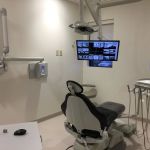
Emergency Dental Care for Tooth Injuries and Pain: Immediate Relief and Expert Help
- What is Emergency Dental Care?
- Common Tooth Injuries Requiring Emergency Care
- How to Handle Dental Injuries Before You See a Dentist
- Tips for Managing Tooth Pain Until You Can See a Dentist
- Choosing the Right Emergency Dentist
- Real-Life Case Studies: Tooth Injury Emergencies
- Aftercare for Tooth Injuries: What to Expect
What is Emergency Dental Care?
Emergency dental care refers to urgent treatment required for various dental issues that demand immediate attention. These situations often involve tooth injuries, intense pain, or complications that could worsen without timely intervention. Whether it's a broken tooth, a severe toothache, or an abscess, dental emergencies require prompt action to prevent further damage and ensure a successful recovery.
Knowing when to seek emergency care and how to handle dental emergencies at home can make a significant difference in managing the situation until you receive professional help.
Common Tooth Injuries Requiring Emergency Care
Tooth injuries can happen unexpectedly, often as a result of accidents, sports, or falls. Some of the most common tooth injuries that require emergency dental care include:
1. Broken or Chipped Teeth
Broken or chipped teeth are among the most frequent dental injuries. Whether due to a fall, car accident, or biting something hard, broken teeth can cause pain and discomfort. Depending on the severity of the injury, emergency care may be needed to restore the tooth or prevent infection.
2. Knocked-Out Teeth
If a tooth is knocked out, it’s crucial to act quickly. The sooner you seek treatment, the higher the chances of saving the tooth. Handling the tooth properly and getting it to a dentist within an hour can make all the difference in preserving it.
3. Severe Toothaches
Severe tooth pain can often indicate an infection or abscess. If left untreated, this can lead to serious complications. Emergency dental care may be required to relieve the pain, treat the infection, and prevent the spread of bacteria.
4. Abscesses and Infections
A dental abscess is a painful infection that forms around the root of a tooth. Abscesses can lead to swelling, fever, and severe pain, and they require immediate care to prevent the infection from spreading to other parts of the body.
5. Lost Fillings or Crowns
A lost filling or crown can leave the tooth vulnerable to further damage or infection. If this happens, it’s essential to seek emergency care to protect the tooth and prevent additional issues from arising.
How to Handle Dental Injuries Before You See a Dentist
Knowing how to handle a dental emergency before reaching a dentist can significantly affect the outcome. Here are some steps to take in various situations:
1. Broken or Chipped Tooth
If you’ve broken or chipped a tooth, try to find and save any pieces of the tooth. Rinse your mouth gently with warm water to clean the area, and apply a cold compress to reduce swelling. If the tooth is painful, over-the-counter pain medication may help until you can see a dentist.
2. Knocked-Out Tooth
If your tooth has been knocked out, it's vital to act quickly. Pick up the tooth by the crown (avoid touching the root), rinse it gently if dirty, and try to place it back in its socket. If this isn’t possible, store the tooth in milk or a saline solution until you can see an emergency dentist.
3. Severe Toothache
For a severe toothache, rinse your mouth with warm water and floss gently to remove any food particles. Applying a cold compress to the outside of your cheek can help alleviate pain. Avoid placing aspirin or other painkillers directly on the tooth, as this could cause further damage.
4. Abscess or Infection
If you suspect an abscess, rinse your mouth with warm saltwater to reduce swelling and pain. Avoid applying heat directly to the area, as it can worsen the infection. See a dentist immediately to address the infection and prevent it from spreading.
Tips for Managing Tooth Pain Until You Can See a Dentist
Tooth pain can be excruciating, but there are a few things you can do to manage discomfort until you receive emergency dental care:
1. Over-the-Counter Pain Relief
Non-prescription pain relievers like ibuprofen or acetaminophen can help reduce pain and inflammation. Be sure to follow the recommended dosage instructions.
2. Cold Compress
Applying a cold compress to the outside of your cheek can help numb the pain and reduce swelling in the affected area. Make sure to wrap the ice in a cloth to avoid damaging the skin.
3. Avoid Certain Foods
Until your dental injury is addressed, avoid hard, crunchy, or sticky foods that could exacerbate the pain or cause further damage to the tooth.
Choosing the Right Emergency Dentist
When dealing with a dental emergency, it's essential to find the right emergency dentist who can provide prompt and effective care. Here’s what to look for:
1. Availability
Choose a dentist who offers emergency services, especially if you're looking for care outside of regular office hours.
2. Location
Opt for a dentist that’s conveniently located near your home or work, so you can get to their office quickly when needed.
3. Expertise
Ensure that the dentist has experience with emergency situations. You may want to look for reviews or testimonials from other patients who have received emergency care.
Real-Life Case Studies: Tooth Injury Emergencies
Consider the case of Mark, a 28-year-old who was playing basketball when he was accidentally elbowed in the face, knocking out one of his front teeth. Thanks to his quick action—storing the tooth in milk and seeking an emergency dentist within 30 minutes—Mark was able to save his tooth. His dentist successfully reimplanted the tooth, and Mark was back to his normal self within a few weeks.
This case illustrates how vital it is to know how to handle a tooth injury before seeking care. Quick intervention can mean the difference between saving or losing a tooth.
Aftercare for Tooth Injuries: What to Expect
After receiving emergency dental care, follow your dentist's aftercare instructions carefully. This may include avoiding certain foods, taking pain medication, and possibly wearing a dental splint for a few weeks. Regular follow-ups may also be necessary to ensure proper healing.







 Dr. David Newkirk - Cosmetic and General Dentistry5.0 (31 review)
Dr. David Newkirk - Cosmetic and General Dentistry5.0 (31 review) Smile Works Dentistry & Orthodontics in Lake Forest4.0 (35 review)
Smile Works Dentistry & Orthodontics in Lake Forest4.0 (35 review) Maple Brook Dental of MN4.0 (532 review)
Maple Brook Dental of MN4.0 (532 review) Frankfort Avenue Family Dental4.0 (405 review)
Frankfort Avenue Family Dental4.0 (405 review) Tender Smiles 4 Kids4.0 (450 review)
Tender Smiles 4 Kids4.0 (450 review) Bryn Mawr Dental Associates4.0 (493 review)
Bryn Mawr Dental Associates4.0 (493 review) The Importance of Oral Health Education During Pregnancy for a Healthy Pregnancy
The Importance of Oral Health Education During Pregnancy for a Healthy Pregnancy Best Tips for Brushing Your Teeth Properly for Healthy Gums: Essential Techniques for Oral Health
Best Tips for Brushing Your Teeth Properly for Healthy Gums: Essential Techniques for Oral Health Why Skipping Dental Checkups Can Lead to Bigger Oral Health Problems
Why Skipping Dental Checkups Can Lead to Bigger Oral Health Problems Advantages of Porcelain Dental Restorations
Advantages of Porcelain Dental Restorations How Can Diabetes Cause Tooth and Gum Problems? Preventing and Managing Oral Health Issues
How Can Diabetes Cause Tooth and Gum Problems? Preventing and Managing Oral Health Issues Healthy Habits for Promoting Good Oral Health and Hygiene: Tips for a Healthy Smile
Healthy Habits for Promoting Good Oral Health and Hygiene: Tips for a Healthy Smile